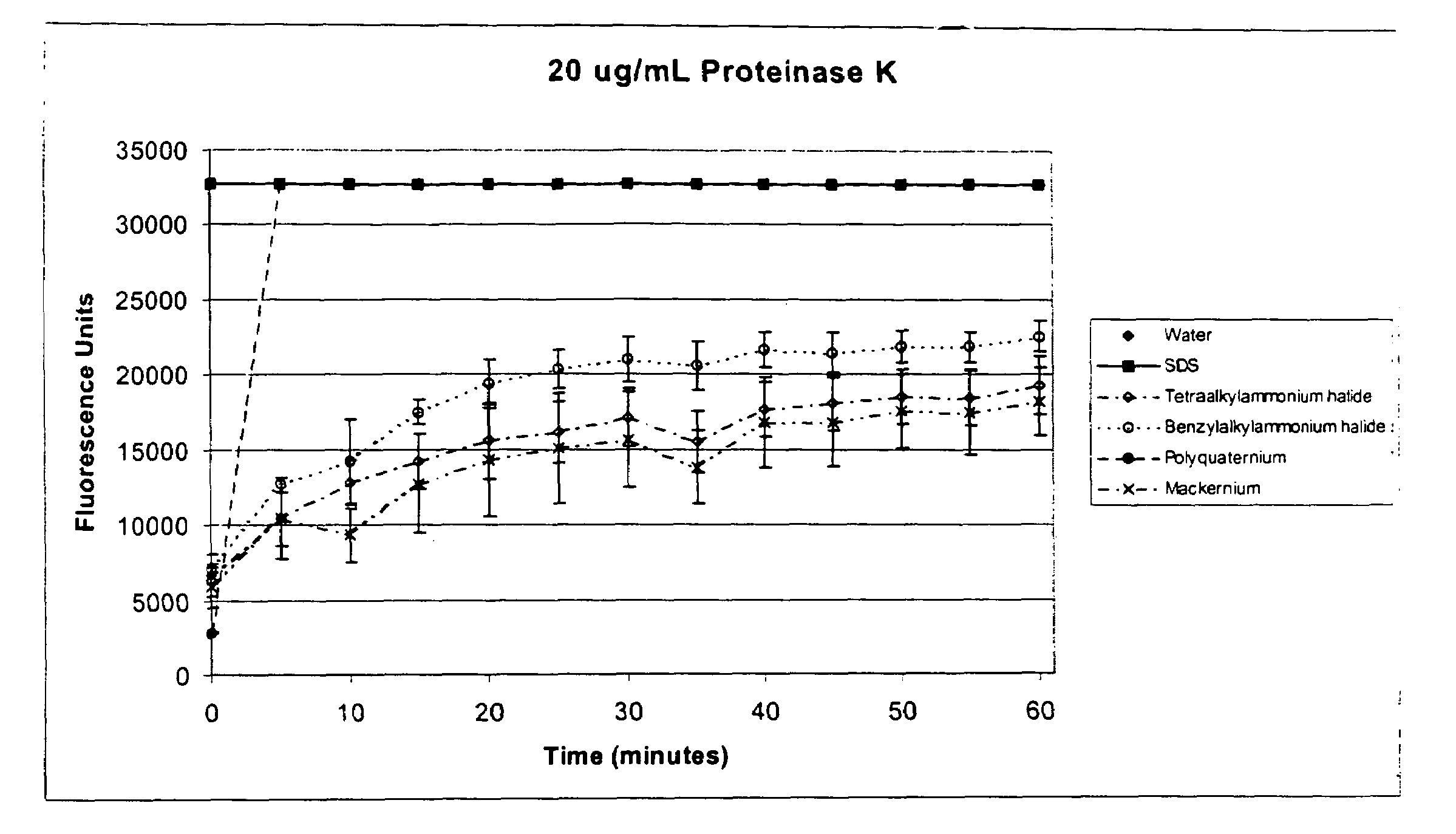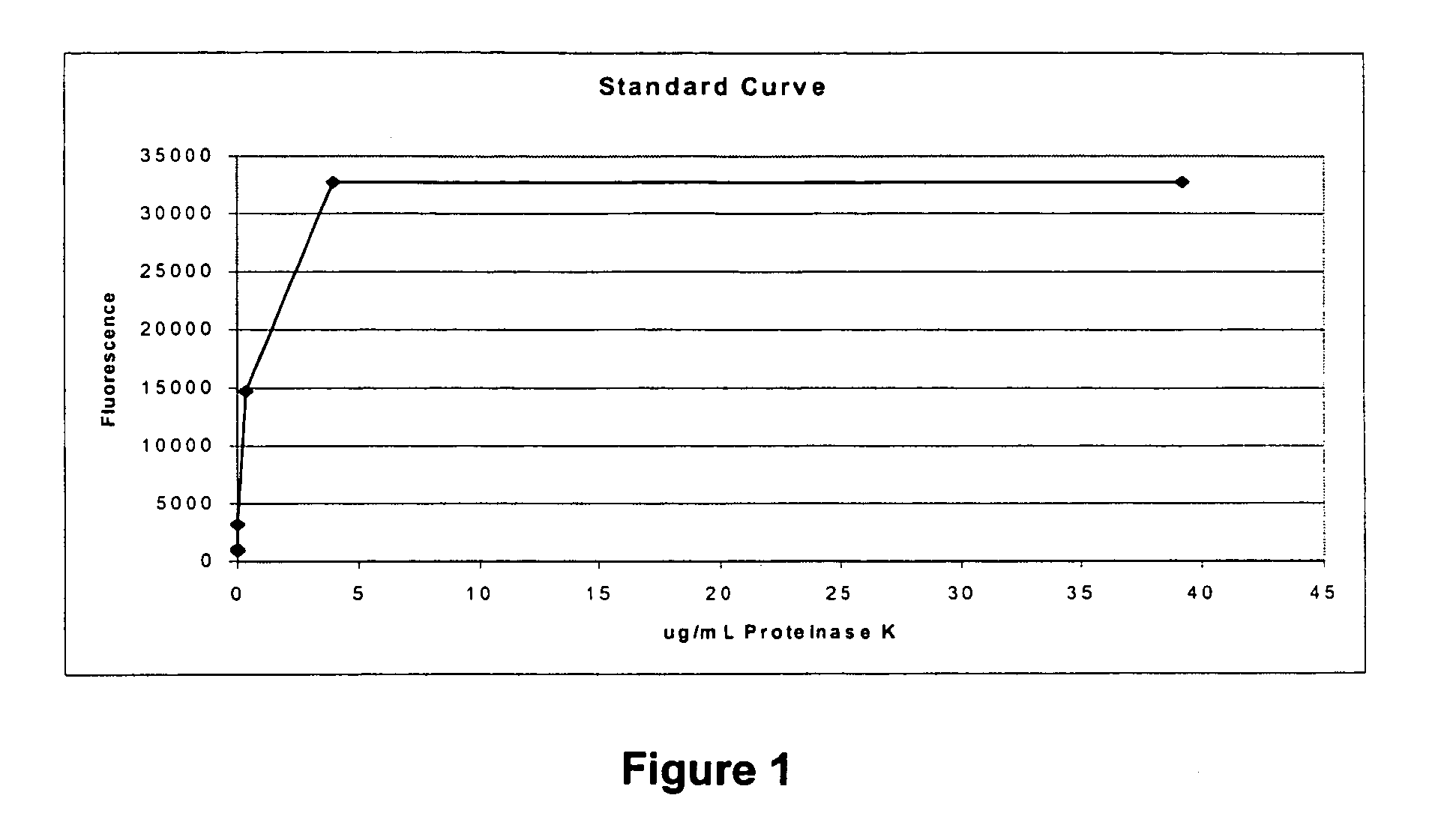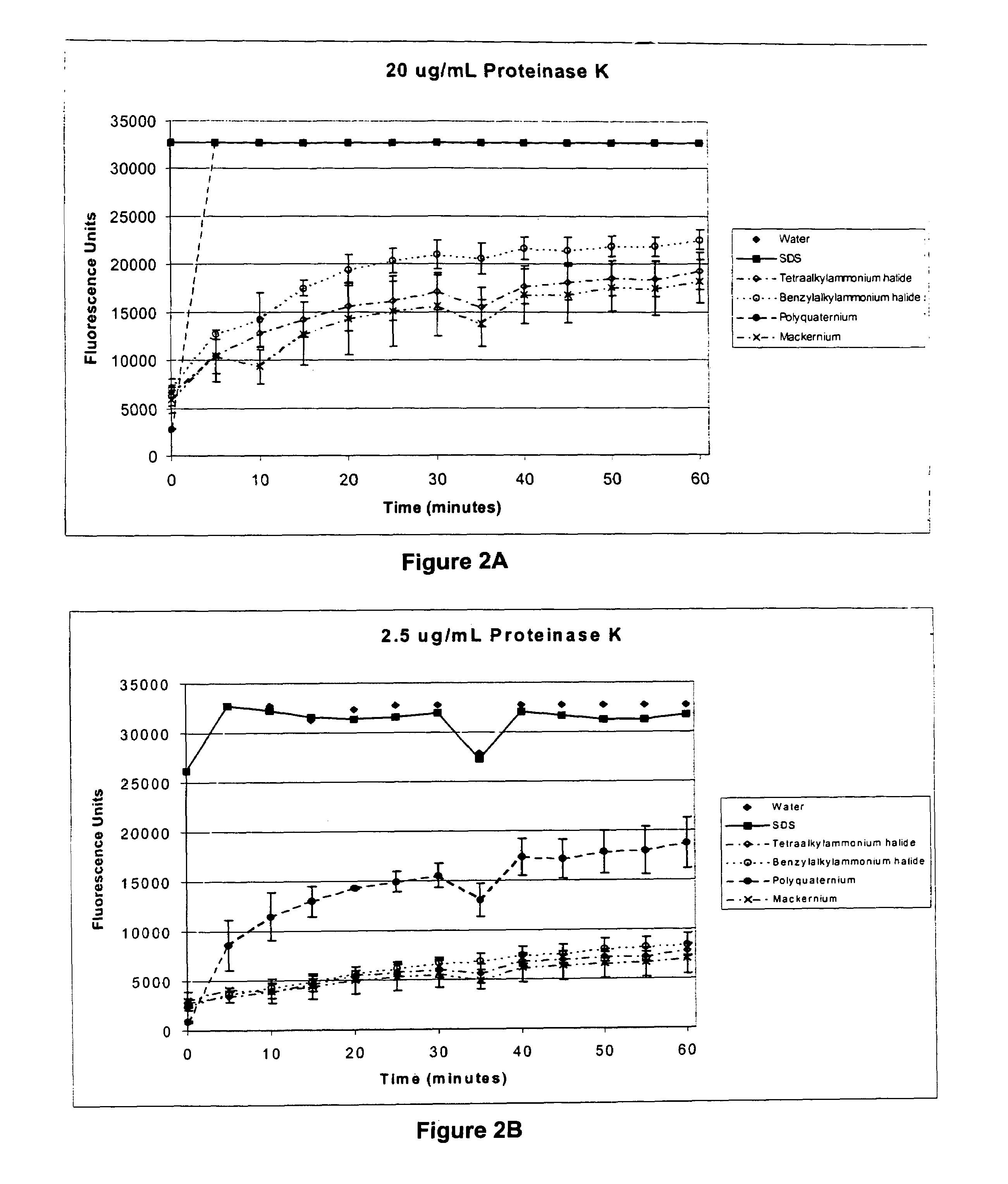Compositions, methods, and kits for isolating nucleic acids using surfactants and proteases
a technology of surfactants and kits, applied in the field of compositions, methods and kits for isolating nucleic acids using surfactants and proteases, can solve the problems of reducing the efficiency of chaotropic salts and nonionic surfactants. nucleic acid obtained using these methods, however, reducing
- Summary
- Abstract
- Description
- Claims
- Application Information
AI Technical Summary
Benefits of technology
Problems solved by technology
Method used
Image
Examples
example 1
[0060]An assay was developed to measure the activity of Proteinase K with BoDipy-labeled Casein Conjugate (Enz Check Protease Assay Kit, Product number E6638; Molecular Probes, Eugene, Oreg.). The concentration of fluorescent BoDipy moieties in this derivatized conjugate is sufficiently high so that when the protein is intact, the fluorescence of individual moieties is quenched. Upon digestion of the derivatized casein by a protease, however, peptides containing a lower number of BoDipy dye molecules are released, resulting in an increase in fluorescence. To determine an initial dynamic range for an assay, BoDipy-labeled Casein was digested for one hour with a decreasing concentration of Proteinase K as follows. Proteinase K (Product number 2546, Ambion) was added over a range of final concentrations (40 μg / ml to 40 μg / mL) to 500 μL of buffer (10 mM Tris, pH 8, 20 mM CaCl2) containing 10 μg / mL BoDipy-labeled Casein Conjugate. Following a one hour incubation at 60° C. with mixing, 10...
example 2
[0062]Initially, a series of reaction compositions were analyzed for their ability to disaggregate a biological sample, e.g., slices of liver. These reaction compositions comprised 100 mM Tris, pH 8.0, 20 mM dithiothreitol (DTT), and optionally, 1 mg / mL Proteinase K, surfactants (e.g., cationic, nonionic and anionic detergents), chaotropes, or the additive 1-methyl-2-pyrollidinone (Sigma). Each reaction compositions was placed in a tube with a slice of liver and then incubated at 65° C. The tubes were observed periodically to determine which reaction compositions were able to efficiently macerate the sample.
[0063]As shown in Table 1, Proteinase K alone was able to effectively digest the liver tissue, but only after extended incubation at 65° C. Of all of the reaction compositions examined, those containing the cationic surfactant CTAB most effectively macerated the sample during a one hour incubation period. Additionally, CTAB appeared to enhance the proteolyitic activity of Protein...
example 3
[0065]To test the effect of cationic surfactants on the activity of Proteinase K, a series of reaction compositions were prepared as follows. Reaction compositions comprised: Casein BoDipy conjugate (1 μg, 10 ng / μL), 10 mM Tris, pH 8, 20 mM CaCl2, 1% surfactant (shown in Table 2 below) and a dilution series of Proteinase K at concentrations of 20 μg / mL, 5 μg / mL, 1.25 μg / mL, 0.31 μg / mL, 0.078 μg / mL, 0.02 μg / mL and 0.005 μg / mL. The anionic surfactant sodium dodecyl sulfate (SDS), known to activate Proteinase K activity under the conditions tested, was included as a positive control. Reaction tubes were incubated at 60° C. in a 96-well optical plate (MicroAmp@ Optical 96-Well Reaction Plate, Applied Biosystems) and the amount of released fluorescence was measured at the indicated time points using an ABI Prism 7700.
[0066]
TABLE 2SurfactantsSurfactantSourceOlealkonium chloride(CAS No.: 37139-99-4,McIntyre Group LTD).Mackernium SDC-85(CAS No. 122-19-0,(Stearalkonium chloride)McIntyre Grou...
PUM
| Property | Measurement | Unit |
|---|---|---|
| pH | aaaaa | aaaaa |
| pH | aaaaa | aaaaa |
| pH | aaaaa | aaaaa |
Abstract
Description
Claims
Application Information
 Login to View More
Login to View More - R&D
- Intellectual Property
- Life Sciences
- Materials
- Tech Scout
- Unparalleled Data Quality
- Higher Quality Content
- 60% Fewer Hallucinations
Browse by: Latest US Patents, China's latest patents, Technical Efficacy Thesaurus, Application Domain, Technology Topic, Popular Technical Reports.
© 2025 PatSnap. All rights reserved.Legal|Privacy policy|Modern Slavery Act Transparency Statement|Sitemap|About US| Contact US: help@patsnap.com



